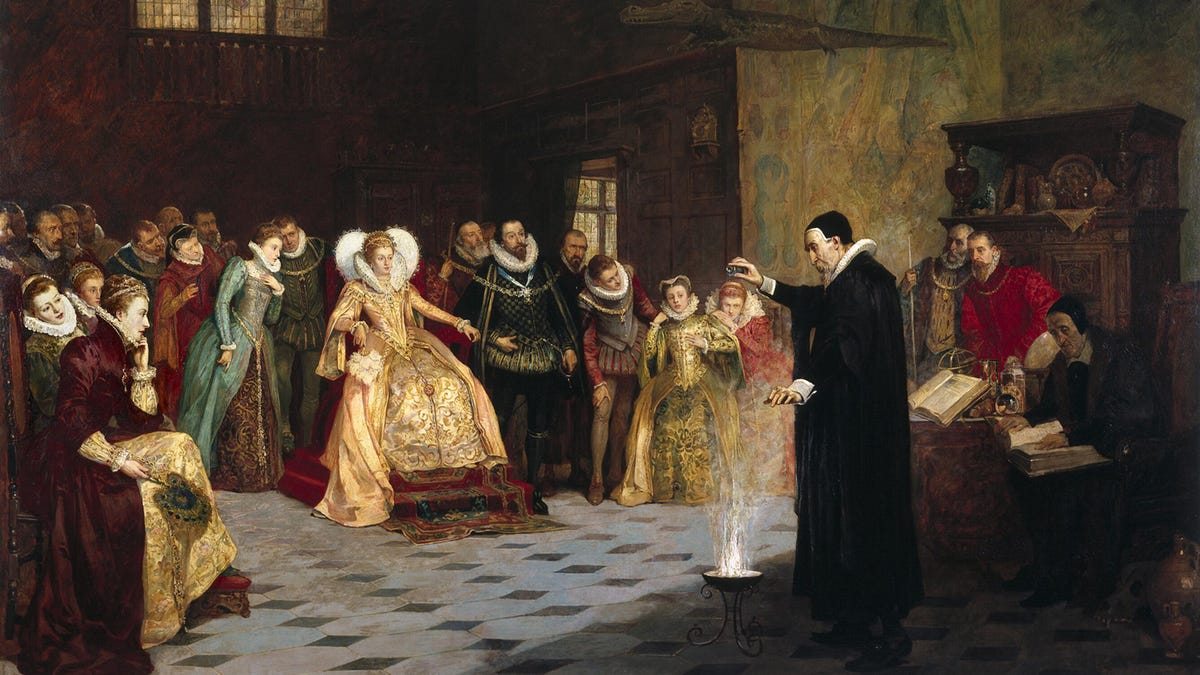X-ray reveals Elizabethan magician John Dee's circle of skulls
A Victorian painting of Queen Elizabeth I's court philosopher depicted him in a halo of skulls that was subsequently painted over.
A famous painting of Elizabethan court philosopher, mathematician and alchemist John Dee (1527-1609) has been revealed to contain secrets, just like its subject. An X-ray analysis of the work has revealed that Dee, performing an experiment for Queen Elizabeth I, was originally depicted surrounded by a halo of skulls.
The painting, on display as part of a free exhibition on the life of Dee at the Royal College of Physicians in London, does not have an exact date. It was painted by Henry Gillard Glindoni, who lived from 1852 to 1913, and is generally placed sometime in the Victorian era. The Victorians had a particular fascination with death, and death imagery, including skulls, can be found in much of their art.
Why the skulls were removed from this particular image is not known, although The Guardian posits that they were too weird an addition to the image, which is otherwise realistic.
"Glindoni had to make it look like what we now see, which is august and serious, from what it was, which was occult and spooky," said Katie Birkwood, the exhibition's curator. "That epitomises the two different impressions of Dee which people have and the fight between them."
Dee is one of history's most fascinating figures. He was adept at mathematics and astronomy, and is widely considered one of the earliest and strongest experts on the occult. Elizabeth I's predecessor, Queen Mary Tudor, had him arrested on the charge of attempting to kill her by means of sorcery. He travelled often, and is thought to have been a spy for Elizabeth. He is also said to have signed his letters to Elizabeth with two circles representing eyes, covered by an enlarged seven, making him the inspiration for 007.
The skulls revealed in the X-ray, which was commissioned for the exhibition.
The exhibition intends to present artefacts about all aspects of Dee's life. "He is one of Tudor England's most interesting and enigmatic figures and we are exploring that without coming down with a view on whether he is a scholar, courtier or magician. He is all of those and more," Birkwood said.
In the painting, part of the Wellcome Library's collection, Dee is shown combining two elements to cause a chemical reaction. Queen Elizabeth I sits observing, with Sir Walter Raleigh to her left and Lord Treasurer William Cecil, 1st Lord Burghley, standing behind him. Standing behind Dee is his assistant, Edward Kelly, whose long hat conceals that his ears had been cropped as a punishment for forgery.
Other articles on display at the exhibition include items from Dee's 4,000-book personal library, annotated and illustrated by Dee himself, as well as artefacts such as his scrying crystal and mirror.


